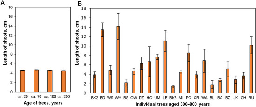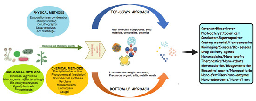The conservation of the genetic resources of old trees is crucial to their ecological role but is extremely difficult, especially for oak species (Quercus spp.) displaying recalcitrance in seed and vegetative propagation methods. Our study aimed to assess the regenerative potential of Quercus robur ...

"The conservation of the genetic resources of old trees is crucial to their ecological role but is extremely difficult, especially for oak species (Quercus spp.) displaying recalcitrance in seed and vegetative propagation methods. Our study aimed to assess the regenerative potential of Quercus robur trees of different ages (up to 800 years) during micropropagation. We also aimed to determine how in vitro conditions can influence in vitro regeneration responses.[..]"
Hello all,
With the threat of honeybee extinction looming on the horizon, I got to thinking that rearing stingless bees could eventually supplant apiculture for the production of high-value base materials used in the biomedical industry. Unfortunately, they don't produce much in the way of actual honey and the slow (re-)adoption of the practice has coincided with the loss of traditional knowledge and habitat destruction in Mesoamerica.
Despite many efforts to fund research programs around the world, interest in adopting meliponiculture here in North America seems next to nil. Perhaps there is a good reason behind it, but I suspect it's merely the product of ignorance and lack of funding sources.
With that said, has anyone heard or read anything that suggests the potential for (safely and lawfully) importing these little beauties into North America? Even if you don't know, I would love to hear everyone's thoughts and musings on meliponine bees anyways.
Today, I learned about depictions of anthropomorphic "Moth Men" bearing Datura stalks in Pre-Columbian era kiva murals. Enjoy this not-so little overview of esoteric knowledge!
I regularly employ the use of biodiversity data like SEINet to crossref with herbarium specimens. Honorable mention to the North American Ethnobotany Database for pulling up bibliographic info on plant-human interactions. There's also a tool to lookup collection site IDs for cacti and succulents here: BCSS Field No. Lookup. These aren't necessarily in the realm of plant care but I believe they could make a nice additon to the sidebar. Cheers!
The most moving story of self-sacrifice in the history of science.

Steam Sky is a roguelike set in a steampunk environment that puts the player in command of a flying ship - managing your crew members, trading, crafting, etc.(in no particular order).
If you appreciate what the developer makes and would like to support their efforts, then please consider buying their game on Itch or making a contribution on Liberapay!
https://thindil.itch.io/steam-sky
https://liberapay.com/thindil
Ancient maize (~6700-5000 BP) from Paredones, Peru, originated in Mesoamerica, suffered a rapid domestication process, and fast coastal migration to Peru, involving adaptation to both Mesoamerican and South American lowlands with no relevant introgression from teosinte mexicana.


YouTube Video
Click to view this content.
The modern agricultural system is facing the unprecedented task of contriving the extensive demand for agrarian production owing to population explosion and global climate change. The employment of Nanotechnology in agriculture has gained immense interest in recent times for the development of susta...

